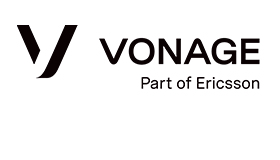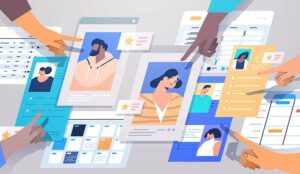In his 2019 book, The Confederation of Self-Interest, CRM and customer engagement guru Paul Greenberg wrote that personalization provides “what customers want – a highly individualized engagement and experience with a company.”
That goes for all aspects of marketing, sales and service, but service is an area where personalization can be especially powerful – and easy, if the business plans ahead.
All through the customer journey, buyers leave little breadcrumbs of data about themselves. As the relationship with the seller deepens, those breadcrumbs become bigger and more complete as the customers volunteer information about themselves.
This can be overt – signing up for a service contract, filling out a warranty form, or participating in a survey – or it can be implied through behaviors. All of this can be tracked through the CRM customer record.
In moments of truth – when the customer needs to contact the business to resolve a problem or answer a question – this data can be called upon to enable the business to respond in a way that speaks directly to that customer.
That means simple things, like knowing the customer’s name and their history with the business, but it can also be used to anticipate actions that best address the customer’s issues based on who they are and what they’ve done in the past with the business.
If you can integrate your contact center with your CRM system, you can gain an even more complete view of customers and their past histories, enabling you to deliver even more personalized services and to include more information in the customer record.
This helps multiply the ROI of both CRM and the contact center, and it also enables you to amass greater amounts of data that can help you make future responses to customers even better.
Here are five examples of CRM empowering your contact center with the tools and information it needs to deliver personalized service to your customers:
Number 1: Allow the Customer to Do It Themselves, If They Want
Digital-age customers are increasingly gravitating toward self-service options. Experts cite many reasons for this: the rise of “digital natives,” the Internet’s influence and the expectation of immediate results at any time of day or night, and the poor reputations contact centers have fostered over the years. Whatever the causes, a growing number of customers would prefer to help themselves.
According to a study commissioned by American Express, 63 percent of customers would prefer to use a self-service option, and according to a Microsoft study, 77 percent of consumers have already used a self-service portal to resolve a problem.
Self-service options are a great way to help customers answer simple questions and resolve common problems – and they screen out many calls so your agents only get the calls with complex questions and problems that require your agents’ skills and knowledge to resolve.
But just because the trend is toward self-service doesn’t mean it’s right for every customer. Some may prefer speaking to an agent. If the customer prefers using self-service options, great! If not, the call should go directly to the right agent, seamlessly and automatically. Which brings us to…
Number 2: Let the Customer Record Select the Right Agent
The caller’s phone number is associated with the customer record, and the customer record contains details of the customer’s history and preferences. That gives your contact center the ability to route calls the right way every time. For example, a caller’s purchase record may suggest they need an agent with expertise on specific products.
Rather than forcing the caller through a maze of options in an IVR system, an integrated solution can automatically direct the call to an available agent with the best skill set and expertise to solve that customer’s problem.
Routing with CRM data can be used in other ways, too. Some customers may want to be connected to the same agent every time, when possible. Preferences like these can be recorded in CRM and used to direct calls as they come in.
Using the caller’s number to direct the call to the agent that is most likely to deliver a great experience sets the agent up for success in two ways: the agent gets to use his or her expertise to its fullest extent, and an approach like this can…
Number 3: Give Agents the Backstory Before They Pick Up the Phone
The call was routed to the agent for a reason. That reason was determined by the data. If you have the data for routing purposes, you also have it handy to provide to the agent.
That means that an agent can answer the phone as customer information is popped onto their screen, allowing the agent to quickly scan the customer record and start a conversation based on facts about the customer instead of having to ask a set of questions to understand who he or she is talking to.
This makes the agent’s life easier by eliminating surprises – if a caller’s dialing in about the same problem the caller’s called about five times in six days, the agent knows what to expect. If the caller has a more positive history with the company, the agent can adjust expectations as well.
And having the data available shortens the path from question to answer, meaning the customer is much more likely to hang up happy. In fact, once the problem that inspired the call has been addressed, the agent can scan the customer record and then, proactively…
Number 4: Fix Whatever Else May Be Broken Before Ending the Call
We’ve all had service calls end with the agent asking, “Is there anything else I can help you with today?” While that’s nice, it can’t match the personalized experience of an agent asking the customer about specific issues that may be visible in the customer record.
The call was about the most pressing issue the customer had, but a well-equipped agent can use the opportunity to smooth out smaller but still annoying issues.
Being able to see all the customer data allows service organizations to transform service calls from emergencies into check-ups for the customer relationship, and do so without putting the onus on the customer to identify areas that may need attention.
If you know your customers well enough, you can identify those areas on your own and take action. And, after you’ve done all you can to help the customer, you need to set up future success. The way to do that is to…
Number 5: Make Sure the Call Data Gets Into the Customer Record
CRM does a great job of recording customer information when it comes from digital sources – and when sales and service personnel take the time to add it into the customer record.
Unfortunately, CRM adoption is still lacking. Miller Heiman’s 2018 Sales Organization Study found that only 47 percent of organizations could claim 90 percent or more of their sales, service and marketing personnel used CRM regularly. That means more than half of the businesses using CRM are still not seeing value from their investments.
Integration with the contact center allows voice data to be captured automatically in the customer record. With contact center solutions like NewVoiceMedia, calls are placed from within the Salesforce interface itself – if you want to be on the phone, you need to be in Salesforce.
And when the service team is invested in CRM, the sales team won’t be far behind – especially since they can use the same platform for selling, relationship building and automating much of their own CRM use.
In Conclusion…
Delivering personalized service requires your agent to know about the person asking for the service.
Automatically connecting the CRM customer record to your contact center allows you to automatically access the customer record based on the phone number associated with the customer and starts a chain-reaction of good things by connecting the customer to the right agent, with the right expertise and the right information to deliver a personalized service experience.
Do you want to give your customers the gift of a great personalized experience in those moments of truth when they could benefit from it most? Schedule some time with one of our product experts to learn how Vonage Contact Center can help your business deliver unmatched personalized service.
This blog post has been re-published by kind permission of Vonage – View the Original Article
For more information about Vonage - visit the Vonage Website
Call Centre Helper is not responsible for the content of these guest blog posts. The opinions expressed in this article are those of the author, and do not necessarily reflect those of Call Centre Helper.
Author: Vonage
Published On: 8th Jan 2020 - Last modified: 14th Jan 2020
Read more about - Guest Blogs, Vonage






 Vonage is redefining business communications, helping enterprises use fully-integrated unified communications, contact centre and programmable communications solutions via APIs.
Vonage is redefining business communications, helping enterprises use fully-integrated unified communications, contact centre and programmable communications solutions via APIs. 










